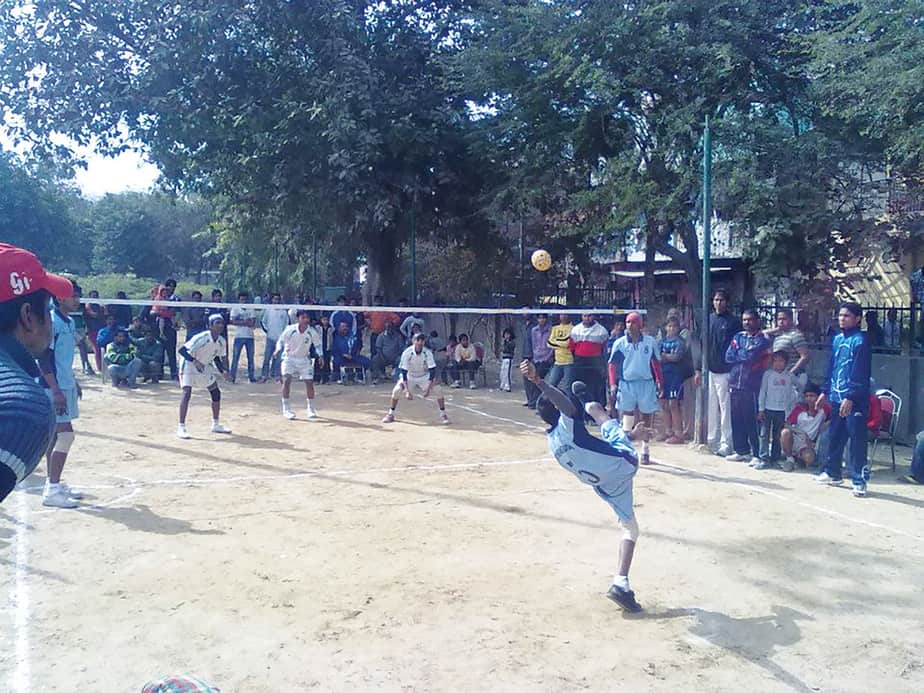
As the clock strikes six in the morning, when most of the Delhiites are still fast asleep, a small ground in the Majnu ka Tilla area (North Delhi) comes alive. Youngsters residing in this area tie a net and indulge in their daily game of Sepak Takraw.
Sepak Takraw is basically a game of volleyball, but one has to use their feet, instead of hands to play it. This unique game, which is mostly played in countries like Thailand and Malaysia, is moderately popular in India. While most of the players in the Indian team are traditionally from the north-east, the Majnu Ka Tilla area has now become the sepak takraw hub of the country. In the recently concluded Asian Games at Jakarta, the Indian sepak takraw team, which clinched a bronze medal for the first time in history, had six players from this part of the capital.
“I started playing Sepak Takraw in 2001,” says Lalit, one of the players who has risen the ranks from Majnu ka tilla to the national sepak takraw team. “From my childhood, I was good at sports and used to play a lot,” says Lalit. “One day I saw a few children practicing the game, around ten years back in the ground near my house in Majniu ka tilla. I used to go to the ground to watch them, and that is when I was approached by coach Hemraj to play the game, and that’s how my journey began and there was no looking back,” he adds.
In fact, the first exponent of the sport from this area into the Indian team is Hemraj, who is now the national coach of the country. “I started my career in 1990, and then progressed through the ranks and represented the country,” he says. “After I quit the game in the late 1990’s, I decided that I would go into coaching and spread awareness about the game among the youth,” he adds. “One day I saw some boys playing sepak takraw on the field opposite Majnu ka tilla gurudwara, and when I went closer, I saw that they were playing with a ball made of tubes from cycle tyres,” adds Hemraj.
“It is this inherent interest within the kids here, that enthused me to train them and provide facilities and proper direction, so that they can achieve something from this sport , and more players arise from the country,” adds Hemraj. “I started training these children and convinced their parents and families to encourage them to play the sport,” he says. “After the initial training at this ground, I take the children for practice at a facility in the Indira Gandhi indoor stadium, and provide them with scholarships from Sports Authority of India,” says Hemraj.
“Around 100 students come every day to train at my camp in Majnu ka tilla,” says Hemraj. “The area consists mostly of people from the economically weaker section of the society; they are either tea sellers, auto drivers or daily wage labourers, and hence I don’t charge a penny from these children,” he says.
A significant portion among the Majnu ka Tilla and neighboutring areas, are from North Eastern states and Tibet, two regions where the sport of sepak takraw is immensely popular. These settlers used to play a lot here with the locals, and that is how the locals too learnt the sport and are now making strides in the national scene, believes Hemraj. “In addition to this, the people of Majnu ka tilla are naturally gifted in sports and children from all households play some sport or the other, which is why sepak takraw has improved drastically here,” adds Hemraj.
Dheeraj, son of an auto driver, started playing the sport 15 years ago when he was just 13. “I was extremely passionate about the game, and due to Hemraj sir’s guidance, I have come this far,” he says. “This sport has given me everything, a passion in life, international exposure and even a job in the Armed Border Force,” he adds.
This area has been churning out players since the last few years, but the crowning moment of glory was the bronze at the Asian Games this year. “The victory brought tears to my eyes. A dream I saw 17 years ago finally became a reality,” says Lalit. “Earlier, my family and neighbours used to taunt me for playing a sport as obscure as sepak takraw, but the now the same people treat me with respect after the Asiad bronze,” he adds. The Indian sepak takraw team, which again consisted of six players from Majnu ka tilla, recently won their first ever gold medal at the Sepak Takraw World Cup in Bangkok last month.
“This is only the beginning,” says Hemraj. “In the future, Majnu ka tilla will produce more champions and soon enough, we hope to earn more plaudits all across the globe, and the whole world will take notice of this humble area in one corner of Delhi, which has produced world champions,” concludes Hemraj.
The four cases are linked to the land-for-jobs and IRCTC scam, which are being probed…
This was followed by the Delhi Development Authority (DDA), which addressed 4,804 of the 5,197…
These local stores stock thicker jackets, practical sweaters, and everyday layers that are designed for…
Veer Ahlawat’s final-round 67 sealed a three-shot win at the Rs 1 crore CIDCO Open…
OnePlus has launched the 15R smartphone and Pad Go 2 tablet in India, with prices…
Nearly 2,800 Delhi vehicles denied fuel on first day of 'No PUC, No Fuel' drive…